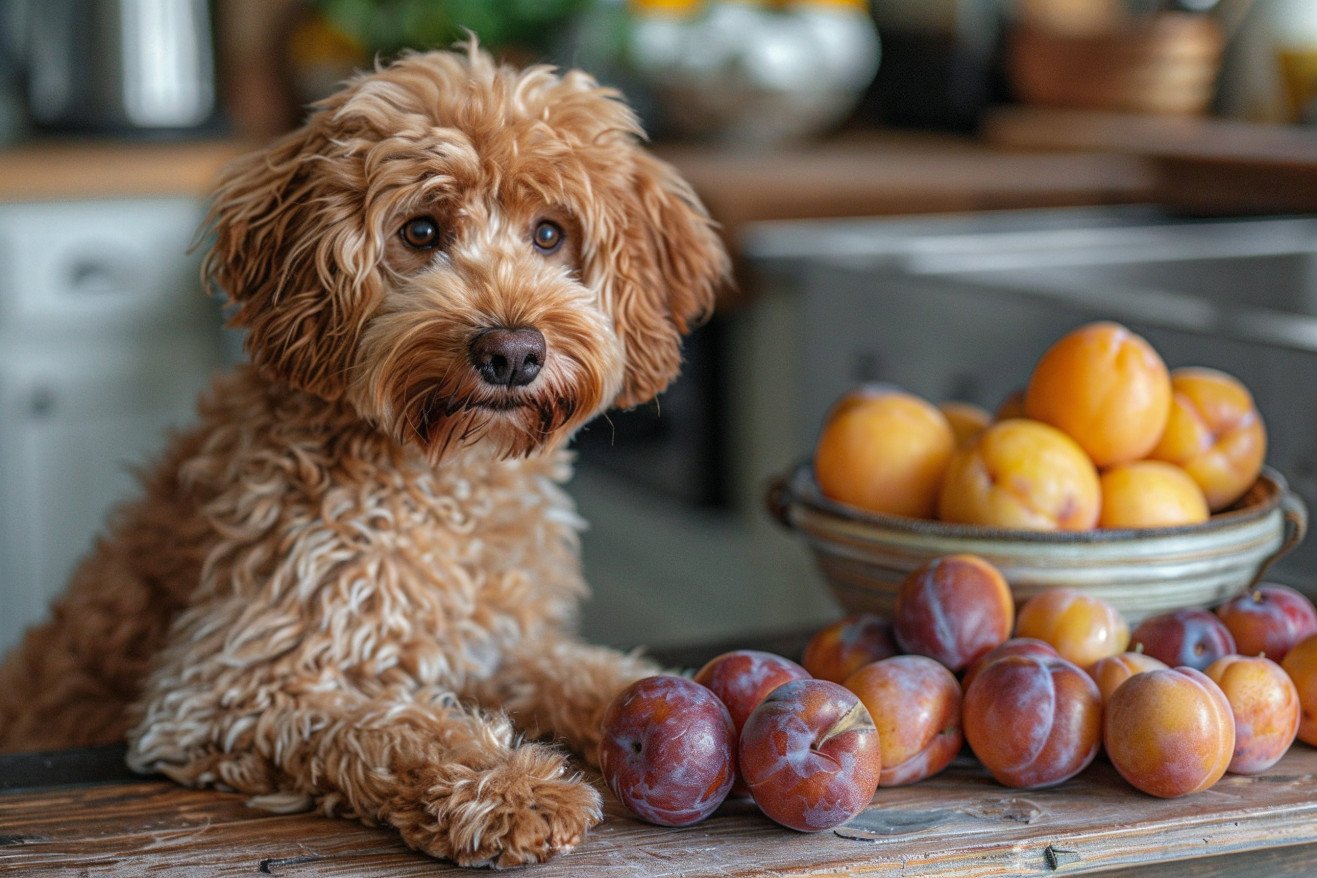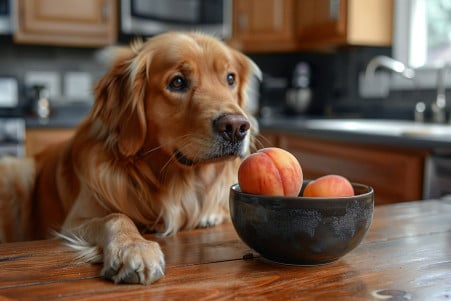Can Dogs Eat Plums? The Benefits and Risks Explored
5 June 2024 • Updated 4 June 2024

If you've ever found yourself enjoying a delicious plum and wondered if your dog could partake in the sweet, juicy goodness, you're probably interested in learning more about the potential risks and benefits. While plums aren't poisonous to dogs, they do have some compounds that can lead to digestive upset if they're eaten in large amounts, so you'll need to be careful about how much you give your dog - a few slices here and there as a special treat should be okay for most dogs.
In addition to covering the nutritional content and risks associated with giving dogs plums, we'll also go over the latest information from veterinarians and other experts to make sure you have a well-rounded view that will help you decide if you want to give your dog this fruit. We'll also cover other fruits that can be good options for healthy, tasty treats for your dog.
Can dogs eat plums?
What Happens If a Dog Eats Plum Pits, Stems, or Leaves?
All parts of the plum tree other than the flesh of the fruit contain cyanogenic glycosides, which are toxic compounds that can release cyanide when they are metabolized, according to research cited by Greg.app. This makes plum pits, stems, and leaves especially dangerous to dogs.
When dogs eat plum pits, stems, or leaves, the cyanide that is released can cause symptoms such as dilated pupils, difficulty breathing, vomiting, tremors, and seizures, according to the ASPCA's toxic plant guide. In addition, if not removed by a vet, plum pits can cause life-threatening intestinal blockages.
Even small amounts of plum tree parts can be dangerous to dogs. As noted in another article from Greg.app, mild plum poisoning can cause drooling, vomiting, diarrhea, and oral irritation, while severe poisoning can lead to seizures, collapse, and difficulty breathing. This makes it important to keep dogs away from all parts of the plum tree other than the fruit.
Healthy Feeding: Indulging in Plum Flesh in Moderation
According to research from Daily Paws, plum flesh is safe and healthy for dogs in small amounts. It's a great source of vitamins A and C and fiber for dogs. However, because of the high sugar content, plums should be fed in moderation, especially for dogs with diabetes or weight problems, according to The Native Pet.
Before feeding dogs plum flesh, it's important to make sure that all pits, stems, and leaves are removed to prevent dogs from accidentally eating something toxic, according to MasterClass. Dogs should be supervised after eating plums to ensure that they don't experience any gastrointestinal upset or allergic reactions.
Emergency Response: What to Do If Your Dog Eats Plum Pits or Plant Parts
If your dog eats a plum pit or any part of the plum plant, it's important to get them to the vet right away. Symptoms of cyanide poisoning, including vomiting, difficulty breathing, and seizures, need to be treated immediately, according to research on plum poisoning in dogs.
If your dog has swallowed a plum pit, make sure to watch for symptoms of intestinal blockage, including vomiting, diarrhea, and abdominal pain, according to this discussion thread. Be sure to tell your vet exactly what your dog ate and when they ate it so they can provide the best care.
The sooner you get your dog to the vet, the better their chances of recovery from eating toxic plum plant parts, according to veterinary advice. While the situation is dire, taking your dog to the vet as soon as possible can help.
Other Fruits That Are Safe and Healthy for Dogs
Despite the potential dangers of plums, there are plenty of other fruits that are safe and healthy for dogs to eat as an occasional treat. According to WebMD, apples, bananas, blueberries, and watermelon are all great low-calorie options. Meanwhile, oranges and pineapple are good sources of vitamin C, according to the American Kennel Club.
It's important to note that when giving dogs fruit, you should always remove the seeds, pits, or tough skins to prevent choking or an intestinal blockage, according to The Honest Kitchen. Fruits should also be fed in moderation due to their sugar content. However, with the right precautions, these fruits can be a fun and healthy addition to your dog's diet.
Plum Tree Hazards: Restricting Access and Preventing Ingestion
If you have plum trees in your yard, it's important to restrict your dog's access to them, according to DogChild. This can be done by installing secure fencing or other barriers around your plum trees that will keep dogs and other animals away, says Rover.com.
You should also make sure to regularly check the area around your plum trees for fallen leaves, pits, or stems and remove them immediately, according to the ASPCA. You can also train your dog to stay away from the area around your plum trees and reward them for doing so, notes Jung Seed. If you find that your dog is constantly being drawn to your plum trees, you may want to consider removing them from your yard altogether.
By taking these precautions, you can make sure that your dog is able to enjoy the great outdoors with you in a way that's safe and healthy.
Conclusion: How to Safely Share Plums With Your Dog
Although plums can be a safe, occasional snack for dogs, it’s important to be aware of the potential dangers and take steps to minimize them. Don’t feed your dog any part of the plum plant other than the flesh, as the pits, stems, and leaves of the plum contain cyanogenic glycosides, which can be poisonous to dogs. In addition, eating plum pits can cause a dangerous intestinal blockage.
If your dog eats a plum pit or shows signs of cyanide poisoning, such as vomiting, difficulty breathing, or seizures, it’s important to get them to the vet immediately. The sooner your dog receives treatment, the better their chances of recovery. In the meantime, you may want to consider other fruits that are safe for dogs, such as apples, bananas, and blueberries, which can offer similar health benefits without the risks.
By taking the necessary precautions and feeding your dog plum flesh in moderation, you can ensure that your dog enjoys this healthy treat without any negative side effects. That said, you should always check with your vet before adding any new food to your dog’s diet to make sure it’s safe for them to eat.


